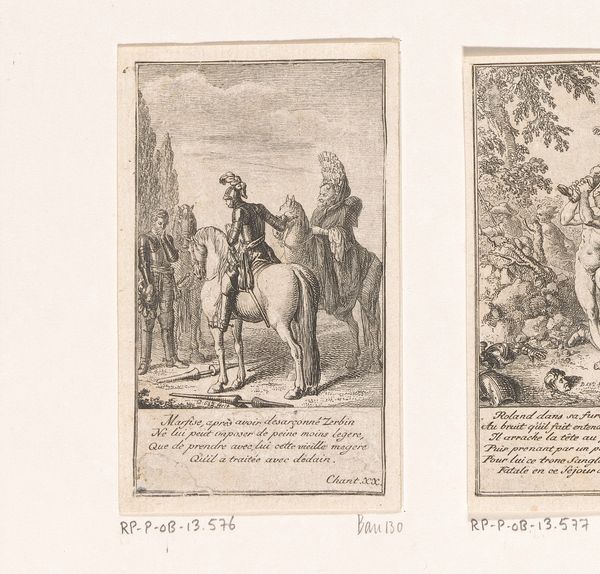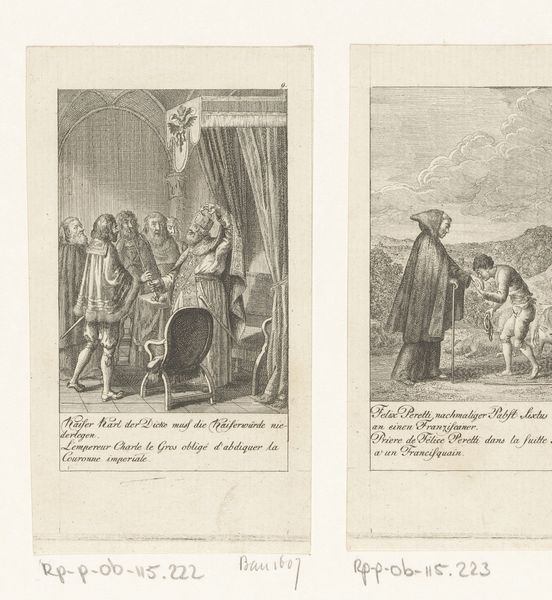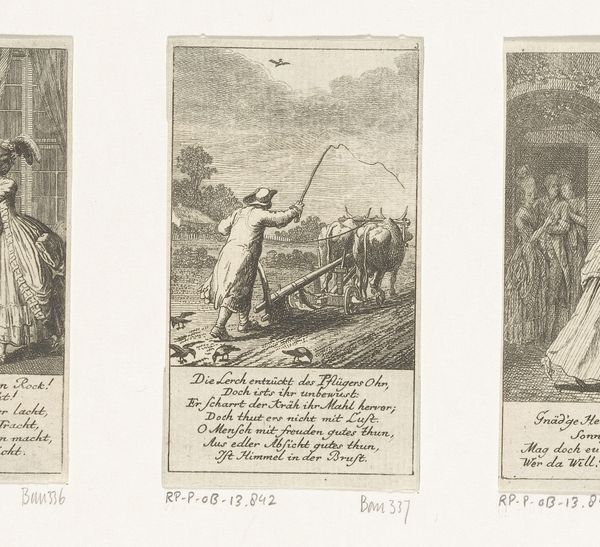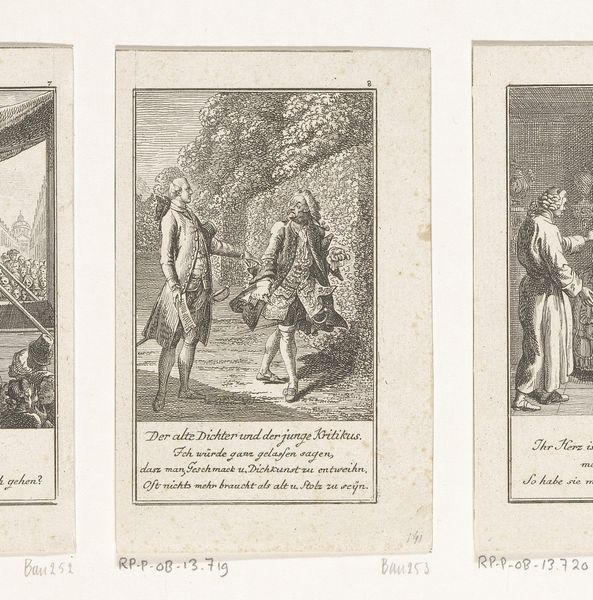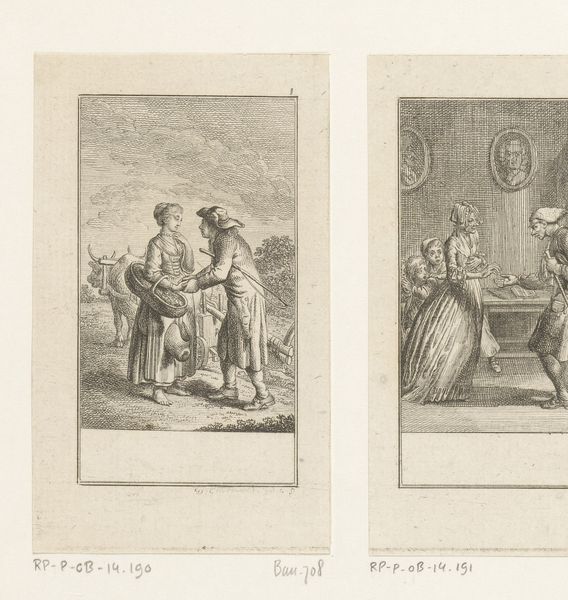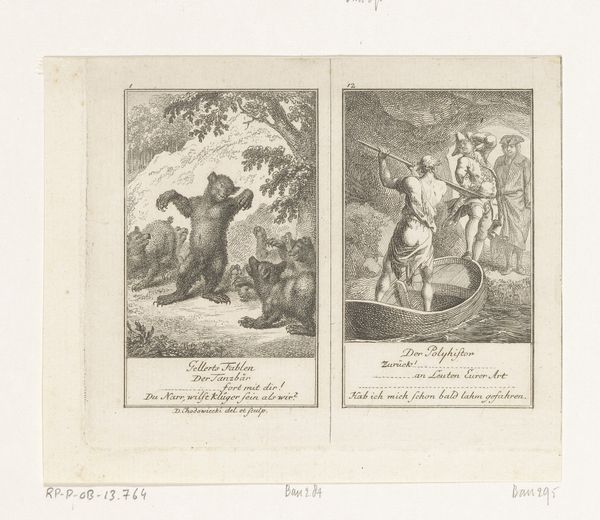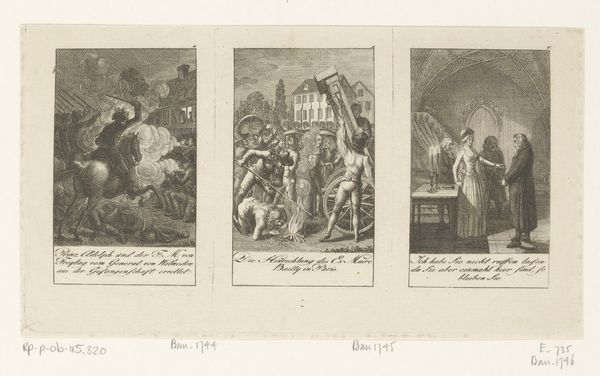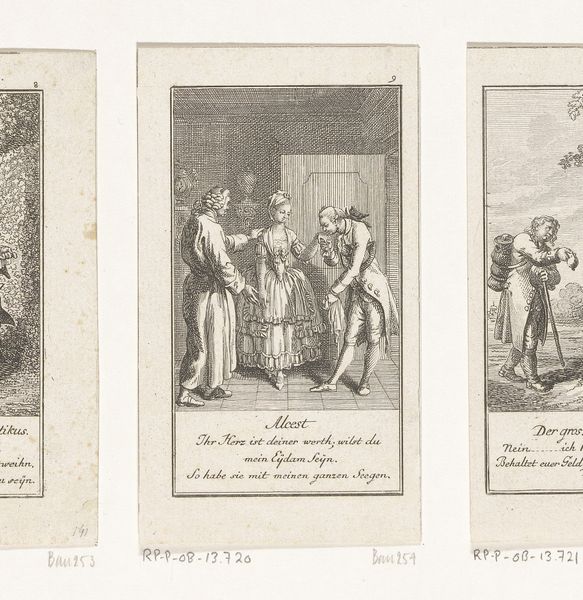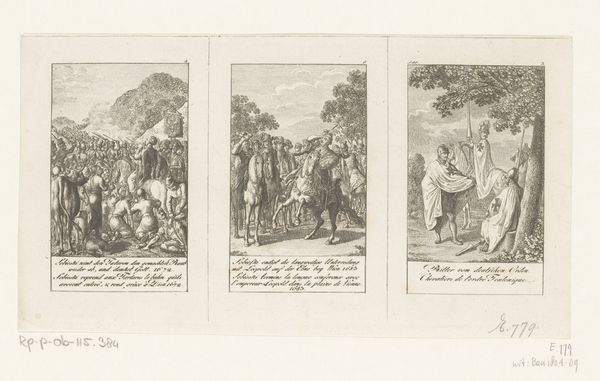
Dimensions: height 92 mm, width 51 mm
Copyright: Rijks Museum: Open Domain
Editor: This is "Juli," an etching by Daniel Nikolaus Chodowiecki from 1777. It shows women working in a field, perhaps harvesting. It has a documentary feel but seems a bit staged somehow. What do you see in this piece, especially considering the period? Curator: Well, the "staged" feeling is interesting, isn't it? We're seeing rural life depicted, but it's idealized through a Romantic lens. While appearing to depict everyday labor, Chodowiecki likely catered to an urban, bourgeois audience far removed from the realities of agrarian work. Editor: So, not exactly a mirror of the lived experience for rural women? Curator: Precisely. This image performs an interesting balancing act. There is text included which highlights the circumstances for young women - suggesting urgency around "opportunity". There's this performative nod towards the value and virtue of labor, while also potentially reinforcing existing class structures. Are we meant to sympathize, admire, or perhaps something in between? Consider what that implied about access, mobility, or lack thereof. How does it sit with you knowing it comes from a time when societal roles were so strictly defined, particularly by gender and class? Editor: That's a great point. I initially just saw a historical snapshot, but now I see the potential complexities and social commentary. I appreciate you calling attention to the relationship between class, labor, and virtue as potential, intertwined aspects of this artwork. Curator: Exactly! Considering these multiple intersecting power dynamics makes the viewing experience that much more rich and revealing. It’s these layered contexts that transform a simple image into a powerful artifact, reflecting not just what *was*, but how it was *perceived* and *propagated*.
Comments
No comments
Be the first to comment and join the conversation on the ultimate creative platform.
